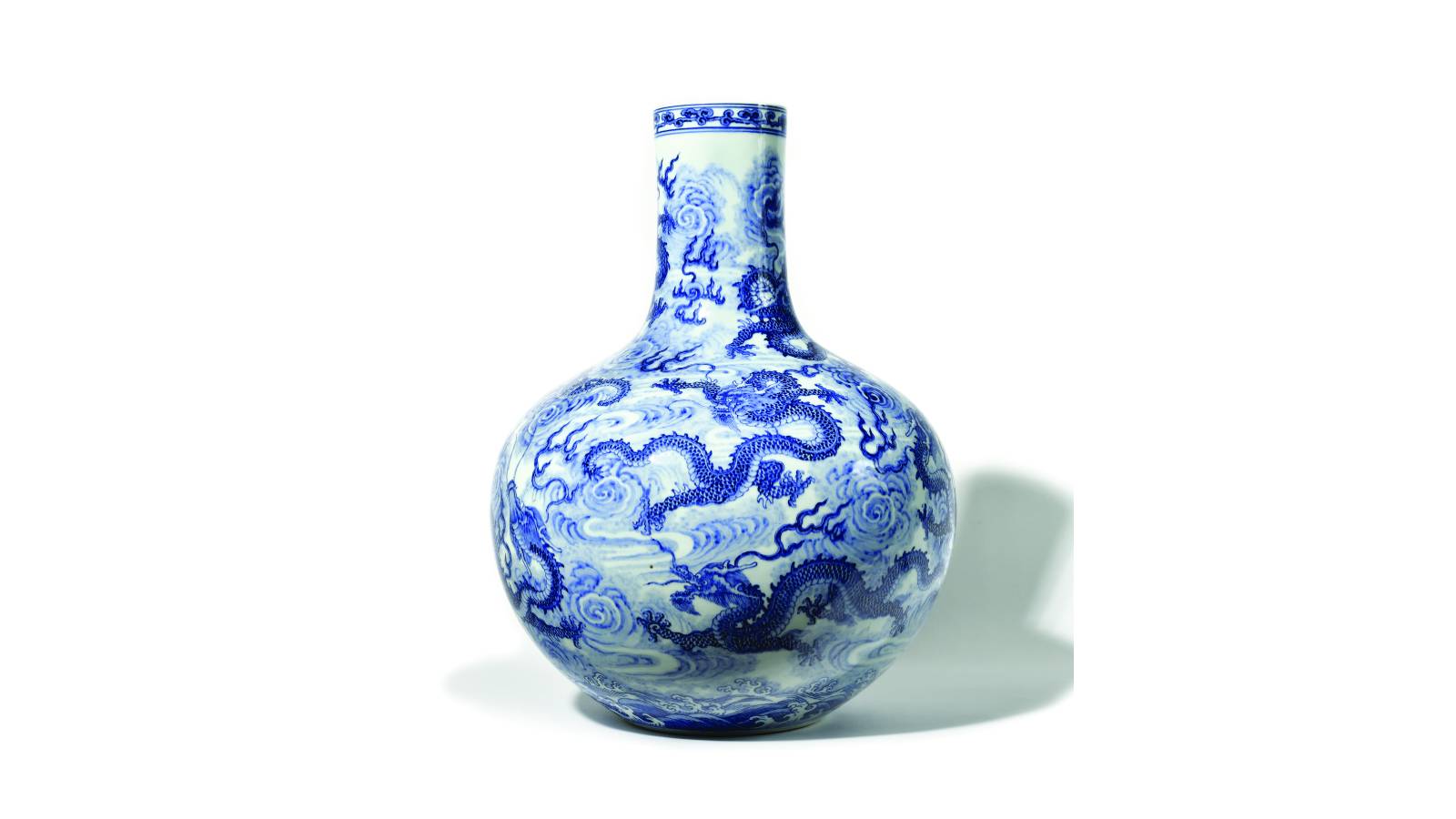
A Chinese vase on auction for €2,000 ($1969) has sold for almost €8 million ($7.9m). /Osenat
A Chinese vase on auction for €2,000 ($1969) has sold for almost €8 million ($7.9m). /Osenat
A Chinese vase put up for auction in France at the cut-rate price of €2,000 ($1,969) has sold for more than €9 million ($8.88m) after eager buyers entered a frenzied bidding war on discovering that it could in fact be a rare Chinese artefact from the 18th century.
Experts had originally thought the vase to be a commonplace item, not much older than 100 years, with the item going on sale at Osenat auction house near Paris for almost 4,000 times less than its final selling price.
However, as more and more Chinese art specialists started showing interest in the piece, the consensus view among the art dealing community was that it had in fact been made during the period of China's Qianlong Emperor over 300 years ago - sending the value skyrocketing.
READ MORE
Will Russia's referendum raise nuclear threat?
Iran promises 'transparent' Amini investigation
Chinese student comes to soprano's rescue
"This is a crazy story," said auctioneer Jean-Pierre Osenat, explaining that the original owner of the vase had not even seen the item before the sale.
The potentially rare object, among the possessions bequeathed to the seller after her mother's death, had been hiding away in the woman's apartment in a small coastal commune along the coast of Brittany in northern France.
The seller, who lives in a French overseas territory, "is a woman who inherited the vase from her mother, who herself inherited it from her mother, a great Parisian collector in the last century," explained one of Osenat's directors, Cedric Laborde.
With experts originally putting the starting price at between €1,500 and €2,000 ($1,480-1,969), it finally went to a bidder for €7.7 million ($7.59m).
Including expenses, the final price tag was a whopping €9,121 million ($8.99m).

Between 20 and 30 potential buyers joined the bidding battle for the Chinese vase. /CFP
Between 20 and 30 potential buyers joined the bidding battle for the Chinese vase. /CFP
The genuine article
"Having talked to various people within the Chinese art dealing community, people who've actually handled the vase, it seems to me very likely that it's the genuine piece," Lazarus Halstead, a London-based Chinese art specialist, tells CGTN Europe.
"These would have been made in the Imperial kilns specifically for the Chinese Imperial Palace," he explains.
The vase belongs to a particular form of Chinese porcelain, large bottle shaped vases called Tianqiuping, which Halstead said were particularly difficult to fire due to their size. And it appears there are not that many around.
Porcelain is typically made in multiples, but the specialist says that as far he knows, only one other Tianqiuping vase with the nine dragons painted in blue and white exists, which is currently held in Beijing's Palace Museum collection.
"The dragons are a symbol of the Emperor and Imperial power, and the form of the vase is also closely linked to Imperial tastes and the heavenly mandate of the emperor, so it really embodies in those two ways the very best of Imperial taste," he says.
Halstead also points out that it is relatively common for surprisingly important pieces to come up in small auction houses as information on the objects often gets lost on being handed down through families.
"But the values that we're talking about here is what's unusual," he says.
Chinese buyer
"From the moment we made the catalog public, we saw that there was a lot of movement: more and more Chinese people were coming to see the vase. The expert said he still thought it was not old," Osenat's Laborde said.
Amid a growing consensus that the piece was from the 18th century - Halstead says it has the Emperor's reign mark on its base - between 20 and 30 potential buyers joined the bidding battle.
The majority called in by phone, and according to the auction house, the final buyer was Chinese.
"The Chinese are passionate about their history and are proud to take back their heritage. I think this vase is not meant to be hidden from view, but exhibited in a museum," said the auction house executive.
As for the seller, she was stunned by the news. "She could have sold it to the local antique dealer. It's a great story for this lady, and for my business, for the very principle of public sales," Laborde said.
Source(s): AFP